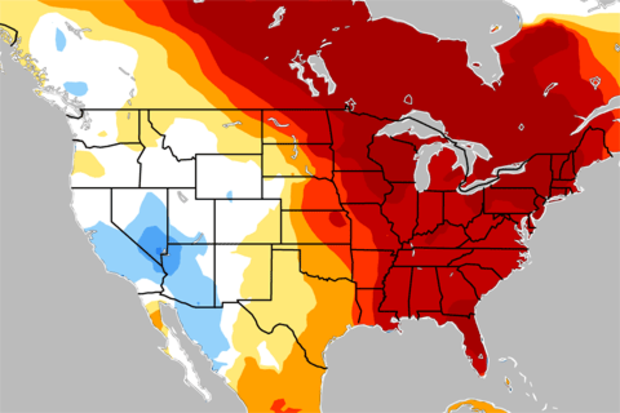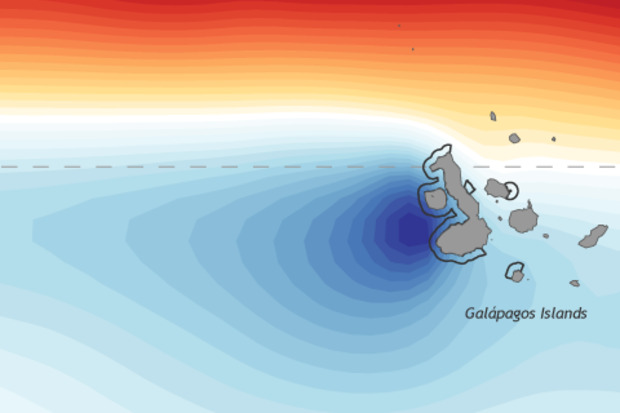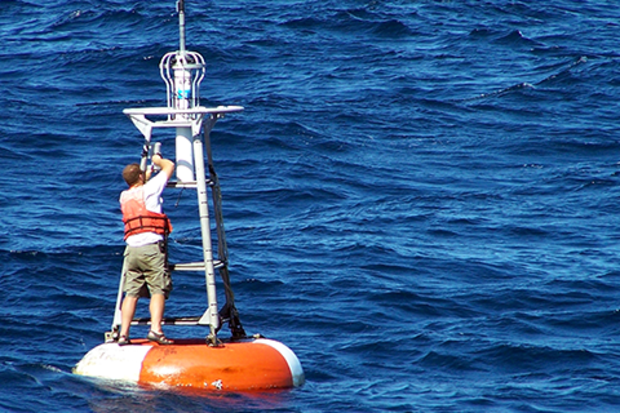Blogs
For the first time ever my extended family did our Christmas gift exchange outside on my aunt’s patio in the Washington DC area. We did our best imitation of a Florida vacation: We abandoned hot cider in favor of tropical beverages. Some of us wore t-shirts and sandals. We played catch with the dogs. Jimmy Buffet stopped by. Okay, maybe not, but it was still totally awesome.
But, what on earth was going on with the weather? Let’s zoom out and look at November and December together because they were fairly similar. As you can see below, temperatures were strongly above-average across much of North America (shown by the yellow/orange/red s…
Read article
If you’ve been following the development of this El Niño, you may have heard in the media that sea surface temperatures in the central equatorial Pacific are at near-record highs. Are we seeing the most powerful El Niño ever?
Remember: ENSO is not all about the ocean
El Niño is one phase of the El Niño-Southern Oscillation (ENSO). An ENSO event involves changes in both the sea surface temperatures and in the overlying atmosphere across the tropical Pacific. In the case of El Niño, sea surface temperatures are warmer than average, and the Walker Circulation, which operates like a vertical loop through the tropical Pacific atmosphere—is weakened. This weakness shows up as more clouds and…
Read article
This is a guest post by Prof. Kris Karnauskas of the University of Colorado Boulder. He runs the Oceans and Climate Lab (@OceansClimateCU), which aims to improve the understanding the tropical ocean and atmosphere, its interaction with ecosystems, and how it has changed in the past and will change in the future. In his spare time we hear he runs ultra-marathons, which is simultaneously very cool and kind of crazy.
What happens when a tiny island rises from the seafloor and stands directly in the path of one of the grandest ocean currents in the world? This happened millions of years ago, when the Galapagos Archipelago formed. We now have penguins in the tropics and such a remarkable biolo…
Read article
This week, Beyond the Data looks at one of the more well-grounded “rules of thumb” for understanding climate change. This one is pretty simple to put your thumb on: on average, cooler places and cooler times are warming more quickly than warmer places and times.
But first, let’s clarify–and emphasize–what we mean by a “rule of thumb.” Just like in its common usage, a rule of thumb here refers to something generally true often enough to be useful and informative, but not universally reliable–kind of a “two-out-of-three” or “three-out-of-four” kind of situation.
So, it's nothing to thumb your nose at, because it’s true more often than not. But it’s also not the case everywhere. &nb…
Read article
As Emily has painstakingly documented at the beginning of every month for what seems like an eternity, we have an El Niño event on our hands. And if you’ve read her posts religiously (which of course you have, because they are awesome), you already know that one way Emily shows the strength of El Niño is via the sea surface temperature (SST) anomalies in a region of the Pacific Ocean called the Niño3.4 region.
You may also have noticed that when we talk about how one event compares to another, we usually say something like, “Depending on what dataset you use….” Up until now, though we’ve haven’t talked much about how exactly we determine which sea surface temperature dataset to use to det…
Read article




